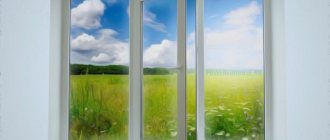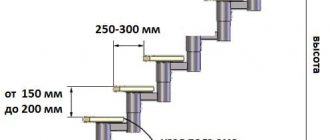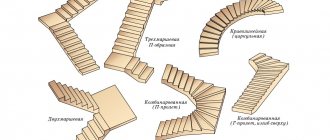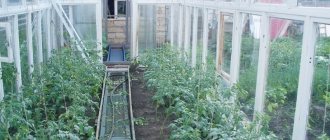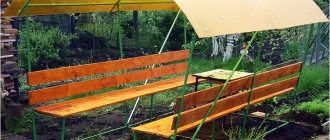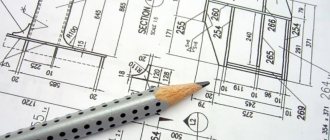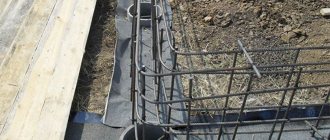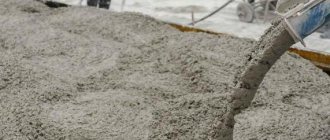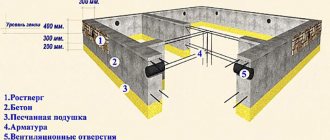Nowadays, having a greenhouse on your own site is not a big problem. We are not talking now about the fact that you can build a greenhouse with your own hands.
What we mean is that there are currently a large number of greenhouses on the market of different sizes and the materials from which they are made.
But the question arises, when producing greenhouses for consumers, does the manufacturer care at least half about the consumer?
Of course, we understand that any manufacturer must take care of his own profit and the development of production.
But you must admit that products with a beautiful appearance no longer carry any convenience; this can primarily be attributed to individual jewelry.
The same cannot be said for a greenhouse.
First of all, it must be functional, transmit a sufficient amount of light and retain enough heat for plant growth, with minimal costs for its production. Do you agree?
We think so, but last but not least, she can be beautiful.
But let's talk about everything in order.
How to choose a design
If you decide to build a polycarbonate greenhouse with your own hands, it is advisable to choose a design that allows you to use the main advantage of this material - its ability to bend. These are two types with curved roofs with arch-shaped supports.
In one design, the arcs extend from the ground itself. If they are curved in the form of a radius, a lot of area is lost at the edges, since it is very inconvenient to work there due to the small height.
Another design solves this problem - with a composite frame welded from several pieces. Straight posts emerge from the ground/from the base, which rise to a height of at least one and a half meters. An arc is welded to them. With this arrangement, the roof is rounded and the walls are straight.
You can even work along walls without problems, standing up straight to your full height.
But the rounded greenhouse roof has several disadvantages. The first is that it is more difficult to make ventilation windows in it than in a straight line. The problem can be solved by making transoms in the walls rather than in the roof. The second disadvantage of a rounded roof in a polycarbonate greenhouse is that snow falls off from it worse than from flat, sloping surfaces.
If you live in a region with snowy winters, you will either have to make reinforced trusses, or make a pitched roof - with one or two slopes.
There is a third solution - to make a rounded part of the roof from two arches, welded at an angle, which forms a kind of ridge. With this structure, the snow melts well and the ridge can be protected with a wide strip of metal. This will improve snow melting and protect the joint from leaks.
Successful examples and options
From this section you will learn what types of greenhouses there are and which of them are most convenient for summer cottages.
The best option for a small cottage is a polycarbonate structure with a length of 2.5 m, a width of 2 m, a height of 2 m and a low wall height of 1.5 m. If you plan to equip shelves on both sides, then choose larger structures - with a width of 2.5 . The best length in this case will be 3 m.
If you are planning to equip a greenhouse for personal purposes, then a structure covering an area of 20 m² will be enough for a family of 4 people. It will easily fit on a plot of 7–10 acres. The optimal dimensions are 3x6 m.
There are universal greenhouses on sale, the width and height of which are standard, but the length may vary depending on the model.
We advise you to read how and what to use to make a greenhouse for seedlings with your own hands.
For example:
- “Udachnaya-2” (2x4, 2x6 and 2x8 m);
- “Dachnaya” (3×4, 6, 8);
- “Udachnaya-3” (4x6 m).
A greenhouse made of cellular polycarbonate “Profi” (8×7×3) is perfect for running a business.
Manufacturers often indicate in the name what specific crop this design is suitable for. Thus, the market offers greenhouses “Cucumber”, “Pepper”, “Perchina”, “Pomidorchik”, etc.
For regions with cold climates and snowy winters, you should look for reinforced structures, which usually have dimensions of 3x6 m and occupy an area of 18 m². Their frame is made of galvanized steel pipes with a diameter of 20×20 or 25×25 mm. They can withstand increased snow loads - 334 kg/m². They serve for 20–25 years.
Video: How to assemble the “Udachnaya” greenhouse yourself
To cultivate a large number of plants, you will need to assemble large structures, for example, 3x6, 6x12 m.
Mini-greenhouses made of cellular polycarbonate with dimensions 2x1.2x0.8 are well suited for growing seedlings, herbs, flowers and short crops (peppers, eggplants). Such compact structures can be easily installed even in an apartment on a balcony. They have no doors or windows. Ventilation and plant care are provided through the raised roof. Such structures can weigh 25–30 kg. They can be easily installed in an area of 5 m². By the way, everyone can afford mini-greenhouse structures. The price starts from 6 thousand rubles.
Did you know? During the Renaissance, greenhouses were called "orange houses" after the citrus fruits that were often grown in those days. Glass structures were available only to very rich people due to the high cost of sheet glass.
So, a polycarbonate greenhouse is an excellent option for growing vegetables, berries, seedlings, herbs in small and large summer cottages, for your own use and for sale. Today there are many designs with different shapes and sizes. You can assemble them yourself or use the services of professionals. A simple design can be assembled by 2 people in 1–2 days, using only a screwdriver or screwdriver.
How to make a polycarbonate greenhouse with your own hands (drawings)
If you decide to assemble a polycarbonate greenhouse yourself, you will need a design plan and certain materials, a list of which you can find below.
Design selection
First, you need to decide on the type and material of the frame for the future greenhouse. There is a huge variety of both standard solutions and individual projects.
- The choice of material is also important. Construction stores sell ready-made kits made from metal profiles that are assembled like a construction set.
- PVC pipes can also be used as a material. They are easy to bend, lightweight and easy to install.
- And of course, one cannot fail to note wood, which also serves as an excellent frame for these buildings, is accessible, cheap and allows the installation of structures of various shapes and sizes.
Drawing up a drawing
A do-it-yourself greenhouse made of polycarbonate, which will not take much time to draw up, will turn out to be large and comfortable, provided that all the necessary rules are followed.
First of all, you need to decide on the size of the structure. They will depend on the area of your personal plot, what and how much you are going to grow, and, of course, on the cost of materials.
Foundation preparation
The strength and reliability of the greenhouse will depend on how high-quality the foundation you prepare for it. There may be several options here. The most common is a wooden base. To build it, you will need a beam, a level, a screwdriver, a shovel, a 7-meter tape measure, and a construction knife. It is necessary to cut 2 pieces of 3 meters each and 2 pieces of 3.85 meters each.
When assembling a box from timber, for convenience we place the timber on the narrow part for further ease of installation of the polycarbonate, so that it overlaps the timber. Three-meter beams should cover the end of the beam 3.85 m.
But the most reliable will be a concrete foundation. If you are going to make a large greenhouse and use a metal profile or wooden blocks for the frame, then a concrete foundation will be necessary due to the significant weight of the entire structure.
To install a cement foundation, we make formwork according to the dimensions of the proposed foundation. We cover it with cement and let the cement harden and strengthen.
What determines the size of polycarbonate greenhouses?
The size of polycarbonate greenhouses consists of the width, length and height of the building. In order to make working in a greenhouse convenient, bring the expected result and be cost-effective, it is necessary to take into account many factors when choosing a design.
So, in order to choose the optimal size polycarbonate greenhouse, you need to consider:
- Purposes of cultivation. If you plan to grow plants for your own use, then the manufacturer must calculate the size of the greenhouse taking into account the number of all family members.
- Construction cost. The larger the size of the greenhouse, the higher its cost. In addition, the price is also affected by the material from which the greenhouse frame is made. The more affordable plastic one is suitable for seasonal greenhouses, but winter ones require a durable frame that can withstand precipitation.
- Greenhouse shape. The greenhouse can be arched, oval, single- or double-sloped. With the same area of greenhouses, working in them can be convenient in different ways.
- Land area. The greenhouse should be placed at least 3 m away from large objects that can create a shadow. In addition, after installing the greenhouse, there should be room on the site for open beds.
- Funds that you are willing to allocate for plant care. The larger the winter greenhouse, the more money will need to be spent on heating it. In addition, large greenhouses require the organization of a serious aeration system.
In addition, you can calculate the size of the greenhouse based on how many bushes of plants you decide to plant and how many beds to make.
Making a frame from a metal profile
- If you are going to make the frame yourself, then you will need: metal profile: square pipe 25 x 25 mm, pipe bending machine, welding machine, angle grinder.
- And for further assembly of the greenhouse: polycarbonate sheets, metal strips, metal corners, self-tapping screws, including roofing ones.
You can easily make a polycarbonate greenhouse with your own hands, the drawings of which are ready. We take a square metal pipe 25x25 mm, preferably galvanized, and roll it through a pipe bending machine, resulting in an arc of the required size.
- We cut the pipe to the size of the structure and weld arcs to it, in increments of 0.65-1.0 m. We make 7 arcs: two for the ends, 5 for the gaps.
- We make the ends - we connect the ends of the arcs with a three-meter square pipe 25x25 mm, weld the door frame and vents. Or such a frame can be purchased at a specialized store.
The main enemy is reflection
Yes, it's true, we talked, but we talked about an ordinary, not folded sheet. What is the difference? Let's figure it out.
Many people have probably noticed that reflections from the sun or other light source often appear on a curved surface.
What is this?
- This is a reflected ray of light that did not pass through the surface of the body and was reflected from it.
- In other words, a curved surface transmits light rays much worse, making every effort to reflect it.
- If this does not matter for some buildings, for a greenhouse it is a complete disaster.
- The sunlight that plants need so much in cold weather is wasted without reaching its end point.
Our advice is to take a thin plate of any transparent plastic and point a beam of light at it. After this, bend the plastic into an arc and repeat the operation, you will see that in the first and second cases, the light transmission capacity differs significantly.
- As you know, the sun does not stand still, changing the angle of illumination can only aggravate this situation, in which up to 40% of the light and, accordingly, thermal energy of the sun will be lost.
Transparent does not mean good
From the above, it becomes clear that when applied to greenhouses, the arched design is the most disadvantageous. A straight surface in this case is the best option.
Greenhouse with straight walls.
Many people consider a completely transparent greenhouse to be the best option for growing plants. A complete misconception inherent in the majority of the population. Don't believe me? Let's go deeper again.
Completely transparent greenhouse.
Our reference is light, this is electromagnetic radiation emitted by a substance in an excited state or heated.
Simply put, light consists of a stream of photons. We will not delve further into the theory, so as not to frighten our readers, let’s move on to a more accessible language.
- You have a completely transparent greenhouse with straight walls, everything is great. But look what's happening.
- Penetrating from the south side, photons of light, passing through the greenhouse space, rest against the northern transparent wall. What will happen to them next?
- You guessed it, they will go through the wall and just fly out. Do you think this is correct?
Simple logic tells us that it is wrong to arrange a greenhouse this way. In this case, losses of light and heat are ensured.
Sometimes when it's opaque it's better
- The most rational thing would be for only the walls facing the sun to be transparent, the rest should not allow sunlight to pass through, they should absorb it.
- As a result, additional energy will be created inside the greenhouse space, ensuring the normal growth of plants (there is also a lot written on our resource about what is profitable to grow in a greenhouse)
Our advice is to make the north side of the greenhouse from an opaque material. Be sure to arrange three layers, external, internal and insulating. Then the rays of light will begin to heat the inner layer, the insulation will not allow the heat to escape outside and it will all remain completely in the greenhouse.
- When planning a greenhouse design, many people miss this important detail.
- For any structure, including polycarbonate greenhouses, the size and configuration are an important factor in its functional capabilities.
Do-it-yourself arched polycarbonate greenhouse: drawings, photo materials, sketches
- Arched structures are perfect for both small country greenhouses and massive greenhouses intended for commercial purposes.
- Answering the question of how to make a greenhouse from profile pipes with your own hands, we can safely say that the primary thing is to develop drawings and make correct calculations. Arch-shaped greenhouses made from pipes have their own design features. The main determining factors are the height of the structure and the dimensions of standard covering sheets.
- Polycarbonate sheets are traditionally sold with parameters of 6 x 2.1 m. A sheet length of 6 m will limit the height of the arched structure.
To obtain an arched shape, the sheet is placed in a transverse (relative to the frame) position.
In this case, the radius of the semicircle will be 1.90 m, and the width of the structure will be 3.80 m. Taking into account the geometric formulas, the height of the greenhouse will be equal to the radius, i.e. 1.90 m. This height of the greenhouse is not suitable for everyone.
- In order for the arched greenhouse to have a height that meets your needs, you can resort to arranging a base. Moreover, by stopping at a base height of one meter, you can get the width of the greenhouse up to 2.4 m, and increase the total height of the entire structure to 2.2 m.
Having correctly set the main dimensions of the greenhouse, you can develop drawings and sketches for making greenhouses from a profile pipe with your own hands.
Another feature of arched frame shapes is that the profile needs to be bent into the desired shape. If you don’t have a special machine for bending pipes, you can purchase ready-made arc-shaped profiles or create an arched shape from short sections connected to each other by metal plates.
To design a small (4-5 m) arched greenhouse, two arc-shaped frames will be sufficient: the initial and final ones. In the case where the length of the greenhouse is 6 m or more, the required number of support frames is calculated, which must be a multiple of the thickness of the polycarbonate sheet. A separate diagram indicates the dimensions of the window and door opening.
Helpful advice! When choosing the width of the greenhouse, it is necessary to take into account the number of beds planned in it and the arrangement of the path between them. Convenient width for processing - up to 0.7 m.
Next, a drawing is developed that specifies the features of installing a polycarbonate greenhouse cover with your own hands (the videos will help you understand the process in detail) indicating the fastening spacing.
He must take into account that polycarbonate panels in arched greenhouses should be positioned with edges along the arc.
It is also necessary to take into account that the bending radius of polycarbonate sheets should not be less than that provided by the manufacturer for this material. Polycarbonate sheets should be covered with punched tape at the ends. For clarity, you can use a selection of photos of polycarbonate greenhouses.
What makes up the overall size of a greenhouse?
Like any building, a greenhouse has length, width and height. Manufacturers, when designating frame dimensions, usually indicate 3 numbers in this format: 3 × 2 × 2 m (L × W × H). This means that the length of the structure is 3 m, and the width and height are 2 m. Each of these parameters affects the ease of caring for vegetable plants.
Width
Width is a determining indicator when choosing a greenhouse, since it affects the comfort and convenience of caring for plants.
This parameter will depend on how many beds are planned to be formed. The optimal width can be determined by taking into account that the beds should be 45–50 cm wide, and the passages between them should be 35–40 cm wide. These parameters will depend on the type of crop being grown - seed producers indicate on the packaging which planting scheme is preferable for a particular plant.
So, let's calculate the optimal width of the greenhouse for growing plants in 2 beds 50 cm wide. Let's add the width of 2 beds (50+50 cm), the width of the passage (40 cm) and the distance from the walls to the beds (15+15 cm ). The result will be 1.7 m. Thus, the minimum width of the greenhouse structure should be at least 2 m.
The width of the doorway should be at least 0.6 m for the movement of only a person; for the passage of equipment (for example, a cart) a passage of 0.9–1 m will be required.
Height
Height is not a determining factor when choosing a greenhouse. The main thing is that a person can move freely in it. The standard door height is 1.8 m. From the top of the opening to the ceiling there should be 0.3–0.6 m.
When growing vegetables on racks, you will need to calculate this parameter so that there is a distance from the ceiling to the top shelf.
The minimum height of greenhouses that are sold is 2 meters.
Drawings of a greenhouse frame with a gable roof
Projects for greenhouses with a gable roof involve making the greenhouse frame with your own hands from a 40*20 mm profile pipe. Such a profile will be able to withstand significant loads in the form of a snow cap or gusty wind.
- The drawings show a diagram of the supporting frame, including the dimensions of the walls, the angle of inclination of the roof, in which ventilation vents are traditionally installed. If you are planning a small greenhouse, you can consider an option with a pitched roof, one edge of which will be located higher than the other, ensuring water drainage and snow removal.
- The angle of inclination of the rafters in the roof of a gable structure is 25-30 degrees. This slope will facilitate the drainage of precipitation from the surface. The roof is considered to be quite flat and does not require the installation of auxiliary slopes on the rafter system.
- In structures of this type, it is assumed that a more durable profile (20x40) will be used for the main posts and base, rafters and ridge beam. For horizontal jumpers, you can use a 20x20 profile pipe. The drawings provide for the arrangement of vertical posts in increments of one meter. It should also be taken into account that if the greenhouse is covered with polycarbonate sheets, the joining lines must be on the profile.
The rafters are also placed at a distance of no more than one meter from each other.
- The design of a greenhouse with a gable roof has some unique features. Here you will need to carefully approach the cutting of polycarbonate sheets for gables. If all dimensions are maintained according to the drawings, this will lead to economical consumption of polycarbonate.
Types of frames depending on material
The frame is the basis of the greenhouse. It is made from different materials and their combinations. It all depends on the location where the structure will be located, operating conditions, financial capabilities of the owner and the availability of a construction team for the work.
Main frame materials:
- tree;
- metallic profile;
- galvanized pipe;
- polypropylene pipes;
- metal-plastic pipes.
Each of these options is good in certain cases. Wood is a cheap and easy to process material. But its durability is not the highest. The metal is very durable, but it promotes the formation of condensation drops, which is very harmful to plants. The same applies to galvanized pipes, but they are better than steel because they do not require anti-corrosion treatment.
It is cheaper and easier to make a greenhouse from plastic or metal-plastic pipes. The construction will be light and will not require a capital reinforced concrete foundation, like a metal frame. But, unfortunately, metal-plastic pipes do not withstand difficult weather conditions very well.
Polypropylene pipes are a favorite option for a greenhouse frame by many farmers. This is an affordable and lightweight material. Polypropylene itself is warm, which is a guarantee against the appearance of unwanted condensation. You can even install a small greenhouse from pipes alone.
Seasonal greenhouse projects
There are no specific requirements for reliability and strength for the construction of seasonal greenhouses. The drawings of these structures are easy to develop and do not involve complex calculations. The frames of such greenhouses can be built from lightweight profile pipes, and the covering material can be polyethylene film or thin polycarbonate sheets.
As a rule, light greenhouses and greenhouses are not equipped with a foundation.
The type of frame of a seasonal greenhouse does not matter much - the main criteria are ease of assembly and budgetary cost of the structure. Several recommendations will help you avoid mistakes when building small greenhouses:
- When developing drawings and sketches, the presence of ventilation hatches at various levels should be taken into account. This will facilitate high-quality ventilation of the greenhouse;
- Fastening of polycarbonate sheets should be done using fastening profiles that do not damage the surface of the plastic. In addition, they can be easily dismantled at the end of the season, eliminating the possibility of deformation of the light frame of the greenhouse;
- the project should provide for the option of simply disassembling the frame for transfer to another location or storage for the winter.
What materials are in demand for farm greenhouses?
Metal, wood and plastic are used to construct the frame. Most often they are combined in various variations. At some points in the structure, maximum strength is needed, while at others, it is necessary to minimize the thickness of the profiles so that they cast as few shadows as possible. The covering of industrial greenhouses can be film, glass or polycarbonate.
Polyethylene - cheap and unreliable
Polyethylene film is easy to install and has a low price. But it is fragile and breaks easily. Polyethylene does not retain heat well and is suitable for use only in the summer; for the winter it will have to be removed and stored somewhere. This is an ideal option for seasonal buildings, but it is not suitable for permanent structures.
Polyethylene is used for large seasonal greenhouses only
In addition to cheap polyethylene films, there are also films made from fluorine rubber and other more durable polymer compounds. They have great resistance to ultraviolet radiation and temperature changes. Such cladding will last much longer, but these materials also cost significantly more.
Glass is durable and expensive
A glass greenhouse can last for decades. Glass is a well-known and traditional material for covering greenhouse structures. The main advantage is unsurpassed light transmission. Glass, even after half a century, will not become cloudy and will not lose its transparency.
Glass is the most transparent material
Cellular polycarbonate is an excellent glass substitute
Polycarbonate coating is easy to install and durable. Compared to its glass counterpart, its light transmittance is slightly lower, but in terms of thermal insulation and impact resistance it will give glass a decent head start.
Cellular polycarbonate is a universal coating material
When choosing a farm greenhouse model, you should rely on the types of plants planned for cultivation, as well as the seasonality of operation and the volume of agricultural products. The efficiency of a greenhouse business largely depends on the technologies used, but the greenhouse design also plays an important role
Preliminary planning and selection of the type of structure should be approached with great care. You won’t be able to make money here without specialized agrotechnical knowledge
Features of the design of the greenhouse-bread bin
The main advantages of the greenhouse-bread bin are:
- unusual ergonomic design;
- minimum number of connecting lines;
- regulation of greenhouse ventilation by opening the lid to the required angle of up to 90 degrees;
- ease of assembly and full use of greenhouse space.
The drawing of such a greenhouse provides for the construction of the upper part of the frame from two half-arches, which are fixed to the base on hinges. The frame of the greenhouse is made of a profile pipe of small cross-section. The radii of the lids are selected taking into account the fact that they can easily open without interfering with each other.
The difference in diameter is equal to the width of the polycarbonate sheet - this ensures that there are no gaps when closed.
Helpful advice! Considering the fact that small greenhouses are usually used for growing seedlings that require a special microclimate, it is recommended to use polycarbonate with UV protection for the coating. The percentage of heat retention of this material is much higher than that of polyethylene film.
The dimensions of the greenhouse are selected individually. The length can be from 3 to 4 meters, the height is no more than one meter. The width is taken taking into account how the greenhouse will open - from one or both sides.
For one-way opening of the greenhouse, it is advisable to choose a width of 0.7-1.2 m, so that it is comfortable to care for the seedlings.
What should be the size of doors in greenhouses?
Basically, the size of the greenhouse door depends on the structure itself, and its shape, in turn, depends on what plants and crops the owner of the site intends to grow.
However, for all types of this structure there are optimal sizes:
- The most acceptable greenhouse width for various purposes is 3.5 meters;
- The distance from the base to the rafters connected to the ridge is 2.5 meters;
- The height from the low wall is 1.5 meters.
This is explained by the fact that in such greenhouses it is convenient to take care of plants. If an extended greenhouse is required, it is best to divide it into sectors.
A door in a greenhouse is needed for the passage or entry of carts with seedlings or soil. If the room does not have windows, the doors are also intended for air ventilation.
Standard structures can reach 2.13 meters in height, and from 60 cm to 1 meter in width. You can build a door of other sizes, but this will require accurate calculations. In addition, it is now possible to install special opening devices on the doors, which open them slightly if the temperature is too high. To do this, it is advisable not to skimp on the mechanism and purchase only a high-quality opener.
Types of polycarbonate
There are three types of this material:
- Monolithic. It looks like glass, but transmits light better, is two to four times lighter, and several times (100-200) stronger. Thickness - from 0.75 mm to 40 mm. The disadvantage is the high price. This material is used if there is a risk of damage - it often hails, the greenhouse is positioned in such a way that icicles and snow can fall on it. There is multilayer monolithic polycarbonate. There can be up to 3-5 sheets, they can have different properties. For example, for greenhouses a double layer is usually used - the first layer is characterized by increased strength, the second does not transmit ultraviolet radiation.
- Corrugated (profiled). Appeared relatively recently. It is formed from a monolithic sheet on which a relief is formed. There are types similar to corrugated sheeting and slate. The thickness of this type of polycarbonate is 0.8-1.2 mm. With such a small thickness, it can withstand hail impacts up to 20 mm in diameter, bends well, and tolerates frosts down to -50°C.
- Cellular (cellular, structured). Consists of two (or more) polycarbonate sheets connected by jumpers. The shape, size, thickness of the jumpers - all this affects the quality and performance characteristics. The thickness of cellular polycarbonate is 4, 6, 8, 10, 16, 20, 24 and 32 mm. For greenhouses, it is better to take no thinner than 10 mm, multilayer.
What type of polycarbonate is best to use for building greenhouses? Depends on the operating mode of the greenhouse. If it is heated, you will need a cell phone. If this is an option exclusively for the warm season, a corrugated (or monolithic) one is more suitable. Monolithic is also not bad, but corrugated has more rigidity.
For greenhouses that are planned to be used from early spring or throughout the winter, cellular polycarbonate is installed.
Which polycarbonate is better for a greenhouse?
The coating experiences fairly large snow and wind loads, UV radiation, and temperature changes. In order for the material to last as long as possible, when choosing, you need to adhere to the following parameters:
- thickness is at least 3.5, and preferably 4 mm;
- weight per square meter - 0.8-1.3 kg;
- the presence of not only vertical, but also diagonal stiffeners;
- wall thickness 0.56-0.8 mm;
- UV protective film on the surface;
- Manufacturer's warranty 10-15 years.
Unlike cheap low-density material, high-quality polycarbonate does not deform the edge when pressed with fingers. This coating can withstand snow, hail, temperature fluctuations, and is not damaged or blooms during the entire warranty period.
Cellular (cellular) suitable for year-round greenhouses
On one of the surfaces of the sheets there must be a marking indicating the presence of a protective layer. When installing, they must be turned to the sun with this side.
Seasonal greenhouses are covered with monolithic polycarbonate
Sellers may claim that UV protection is included in the polymer itself, but this is not enough. Such material will quickly crack and become unusable.
Manufacturers produce budget options at a relatively low price, but provide a guarantee of no more than 6 years. You need to be aware that such material will not last long.
Choosing cellular polycarbonate
It is not difficult to choose corrugated or monolithic - we are guided by the stated characteristics. It is only important that there is protection from ultraviolet radiation. There are no other pitfalls. But with a cell phone there are many nuances. You need to pay attention to the following:
- The thickness of the outer layers and their number. The sheets should be of the same thickness without sagging or thinner places.
- The location of the jumpers and their thickness.
These types of cellular polycarbonate can be
- The presence of a layer that protects against ultraviolet radiation.
The easiest way to check the quality of cellular polycarbonate is to try to squeeze it between your fingers. If it doesn’t press through, even if you make a significant effort, you can take it. If it squeezes easily, look for another one.
Choosing a location for a polycarbonate greenhouse
With a standard rectangular building shape, it is better to position its end part to the west and east in order to provide maximum access to sunlight from the south, which will speed up the ripening of the crop and improve its quality. At the same time, it is recommended to additionally insulate the north. If the size of the summer cottage is small, you can place the greenhouse close to the walls of the house, choosing the southern direction. It must be remembered that the surface of the finished greenhouse will have to be periodically cleaned of dust, dirt, fallen leaves and snow, so access to it should be convenient from all sides.
Installation features
According to the technology, polycarbonate is mounted using starting and connecting profiles. First, profiles are installed on the frame, a sheet of cellular polycarbonate is inserted into them, which is fixed to self-tapping screws with special press washers, which at the same time protect the attachment point from leaks.
Profiles, in addition to holding the sheets in place, also protect the cuts from dust and dirt getting into the bottom. The system looks neat and works well, but all the components cost a lot of money.
Aesthetics for a greenhouse is not the most necessary property, therefore, if you need to save money, they prefer to mount it in a simple way, without profiles and press washers. Here's how to do it:
- The edges of each sheet are covered with silicone. They must be closed, otherwise condensation will accumulate inside, in which mold and fungi will develop over time, and the polycarbonate will lose its transparency. So the edges must be sealed carefully, leaving no room for air and moisture to penetrate.
- The sheets are laid with an overlap of several centimeters, and pressed on top with a strip of tin. The fasteners are installed in an “overlapping” manner through a tin strip.
You can place regular wide washers under the screw heads.
The UV protection layer must face outward during installation. It is important. Otherwise it doesn't work.
This is what directly concerns the fastening of cellular polycarbonate. There is one more point that became clear during the operation of polycarbonate greenhouses. Polycarbonate should not be placed close to the ground. It is desirable that it starts at least half a meter from the surface.
Why? Because firstly, it still gets dirty and almost no light passes through it, so it does not affect the overall illumination. Secondly, it begins to deteriorate—blacken and flake.
It is not clear what causes this reaction, but it is common. So, when developing a model of a polycarbonate greenhouse with your own hands, provide half-meter walls made of another material - brick, building blocks. Doesn't matter.
Industrial greenhouse Farmer-7.5 design
Let's consider one of the standard models of industrial greenhouses supplied to the modern market. This is a structure called "Farmer-7.5". It is an arch-shaped industrial greenhouse with a frame assembled from galvanized profiles and bolted fastenings. All structural elements are equipped with tie beams and cross members, giving the structure high strength and resistance to snow loads.
Scheme of the industrial greenhouse "Farmer-7.5"
The height of "Farmer-7.5" is 3.8 m, width is 7.5 m, length starts from 4.2 m. Moreover, the latter characteristic is always a multiple of 2.1 m - the standard width of the cellular polycarbonate sheet used in this greenhouse as cladding. Recommended SPC thicknesses are 6, 8 and 10 mm. When installed on a deep strip foundation and installed heating systems, the Farmer-7.5 greenhouse is designed for year-round cultivation of vegetables, flowers and berries.
Greenhouse "Farmer-7.5", view from the inside
Characteristics of greenhouses “Farmer-7.5” and “Farmer-5.0”
Below are brief instructions for assembling it.
Step 1. The pediment of the greenhouse is assembled - an arch is formed from individual components, vertical posts, a door frame and ties are added to it to strengthen the structure.
Assembly of greenhouse gables
The gable assembly is almost complete
Step 2. Horizontal purlins are attached to the pediment.
Fastening horizontal purlins
Step 3. The intermediate arch of the frame is assembled. It differs from the pediment from the first operation in the absence of vertical posts and a large number of ties.
Assembling the intermediate arch of the frame
Step 4. The first section of the greenhouse is assembled from the pediment, intermediate arch and purlins, which is subsequently installed on the foundation.
Assembling the first section of the greenhouse
Step 5. Using intermediate arches and horizontal purlins, the greenhouse is extended to the required length.
Extension of the greenhouse frame
Step 6. The pediment is assembled from its other end, as in step 1. Purlins are attached to it and attached to the rest of the frame elements.
Frame assembly
Continued assembly
Step 7. The gates and doors are assembled and mounted on the frame.
Step 8. Polycarbonate is cut and installed on the gables and roof of the Farmer-7.5 greenhouse.
Assembly diagram and polycarbonate cladding
Sheathing the frame with polycarbonate
Assembled industrial greenhouse "Farmer-7.5"
Deciding on the sizes
To better imagine how to make a greenhouse from a profile with your own hands, you must first decide on the dimensions. And in order not to encounter excessive consumption of material and a large amount of waste, it is advisable to correlate these dimensions with the standard dimensions of corrugated pipes and polycarbonate sheets.
In construction markets and metal depots, profile pipes are sold in 6-meter lengths. In stores you can find a different length - 2 or 3 meters. It is more convenient for independent transportation, but it is more difficult to assemble an arched structure from short sections: there is a need to make additional joints.
If you have no problems with how to bend a profile pipe at home for a greenhouse, it is better to purchase standard whips. Each will make an arch about 2 meters high and with a distance between the legs of 3 meters. This is enough to accommodate two beds and a central passage inside.
If the width needs to be increased to 3.6-3.8 m to arrange three beds, then the height will have to be reduced to 1.8-1.9 m, which can create inconvenience if the gardener is tall.
It would seem that the length of the arch can be increased without problems by welding the required section of pipe. But the length of cellular polycarbonate sheets is also 6 or 12 meters, and such an increase will lead to overuse of this expensive coating, the need for its joining and a decrease in reliability.
Therefore, in such cases, the height is increased due to the foundation or a different form of greenhouse is chosen.
For example, the height of the side walls of a pitched structure should be 1.5-2 meters for ease of work. These dimensions correlate perfectly with the dimensions of corrugated pipes and sheet material, which are cut without waste.
What to consider when choosing the size of a greenhouse
So, if you are reading this article, then it means that you have already decided on one criterion for choosing a greenhouse - material. Your choice fell on polycarbonate. Now it’s a matter of determining the required sizes.
When selecting this option, consider the following factors:
- The purpose of purchasing or installing a protective structure for plants . The scale of the design will directly depend on whether you need it for personal purposes or for running a business or generating additional income.
- Types of plants that are planned to be grown . This will allow you to determine what the minimum and optimal height should be. For example, tall rectangular “house”-type structures are well suited for tomatoes; for peppers, the structure can be much lower.
- Area of the dacha plot . It is important to choose a good site for placing the greenhouse. It should be level, sheltered from the winds, and well lit by the sun. It is desirable that the greenhouse structure be located from north to south along its length. This will allow the sun's rays to illuminate the plants correctly and for a long time throughout the day. To roughly understand what dimensions of the structure you need to count on, we note that a greenhouse “house” measuring 3x2 m can fit on 5 acres.
- The price of the structure and the costs that the owner is willing to invest in maintaining the greenhouse. Everything is simple here - the larger the structure, the more money needs to be invested in it and vice versa. So, for example, a structure with a height and width of 3.5 m and a length of 4 m can cost about 50 thousand rubles, a structure with a length of 6 m - 65 thousand, 8 m - 80 thousand. In large buildings, accordingly, more is needed soil, and more costs for communications (irrigation, electricity).
An ideal greenhouse is one that meets the following parameters:
- reliable;
- durable;
- convenient to use;
- durable;
- suitable for the climatic conditions in the region;
- suitable in size to the area of the summer cottage;
- expandable;
- inexpensive.
If you are interested in how much a standard structure weighs, then it all depends on the material of the frame - it will be metal, wood or plastic pipes. For example, the frame of a structure made of arcs with dimensions 2x2x2 can weigh about 40 kg, from profile pipes with dimensions 4x8 m - about 120–140 kg. The weight of one sheet of cellular polycarbonate with a thickness of 4 mm is 0.8 kg/m², 6 mm — 1.3 kg/m², 8 mm — 1.5 kg/m², 10 mm — 1.7 kg/m². Standard sheet sizes are 6 (12) × 2.10 m.
Did you know? A similar type of greenhouse was invented in ancient Rome. And modern greenhouses are improved designs of botanical and winter gardens founded in the Middle Ages in Italy and Germany. They were created for growing exotic plants.
Briefly about the main thing
Such a task as welding a greenhouse from steel profile pipes cannot be called simple. At a minimum, you need a welding machine and the ability to operate it. But you can do without it if you use galvanized profiles that are connected with bolts and special plates.
Conventional pipes will require additional anti-corrosion treatment. Another necessary tool for creating arched structures is a pipe bender.
But you won’t need it either if you choose a greenhouse with a pitched roof or use the DIY bending methods described in the article. Before starting work, you need to decide on the size of the structure, focusing on the standard parameters of corrugated pipes and polycarbonate.
Preparatory stage
Standard sizes of polycarbonate sheet.
When selecting a project for the construction of a greenhouse, it is better to proceed from standard sheet sizes, which will minimize the processing of polycarbonate and reduce material waste. Standard panel sizes are available in two options:
- 6 m x 210 cm;
- 12 m x 210 cm.
Usually the first option is used, since the second is not entirely convenient to use. Polycarbonate sheets for a greenhouse should be bent into an arch. The height of the structure in this case will be about 1.9 meters, and its width will be 3.8 meters. To determine the required number of polycarbonate sheets, you need to divide the length of the greenhouse by the width of the covering (2.10 cm).
When designing a structure, calculations of power loads must be carried out to avoid tilting and further fall of the structure. The greenhouse must have sufficient stability and strength to withstand strong winds and snow pressure.
It is best to use a galvanized profile for the greenhouse frame, as it is durable and reliable.
Next, you need to select the material for the frame. This is a very important part of the design, since the duration of use of the polycarbonate greenhouse will depend on it. The reason for this dependence is the indoor microclimate, which is considered to some extent aggressive. Very warm and humid air creates ideal conditions for wood rot and metal corrosion. Of course, there are means that can withstand such effects, but then the surface of the material will have to be treated regularly. It is best to use a galvanized profile for the greenhouse frame.
If for some reason it is not possible to make a frame from galvanized metal, then the wood (preferably hardwood) should be impregnated with an antiseptic or copper sulfate solution. This design will last for several decades, after which it can be easily replaced.
For work, you need to prepare the following materials and tools:
- polycarbonate sheets (thickness not less than 4 mm);
- galvanized profile;
- brick or wood for the foundation;
- cement mortar;
- waterproofing material;
- self-adhesive aluminum tape;
- fasteners;
- drill;
- jigsaw;
- screwdriver;
- shovel.
We are starting to build a greenhouse.
Making a greenhouse in the shape of a triangle
To make the shape of the correct arch, it is best to insert pipes when pouring the foundation. Then you need to make cuts on them (with a grinder or a hacksaw) about 1-2 m in length. After bending and inserting the arcs, they are secured in the pipes with screws, drilled through or filled with cement.
Polycarbonate can be fixed in different ways:
- drill through holes in the plastic and profile and secure with screws (this method is not very reliable) - the material may crack;
- make two holes in the sheets for the width of the profile and secure them with wire, clamps or staples.
The side walls are cut out, doors and windows are inserted.
You can make arcs from PVC pipes, because they bend well. But attaching polycarbonate to them is much more difficult. It will be necessary to secure it with clamps or screw the longitudinal elements of the frame every 50-80 cm.

